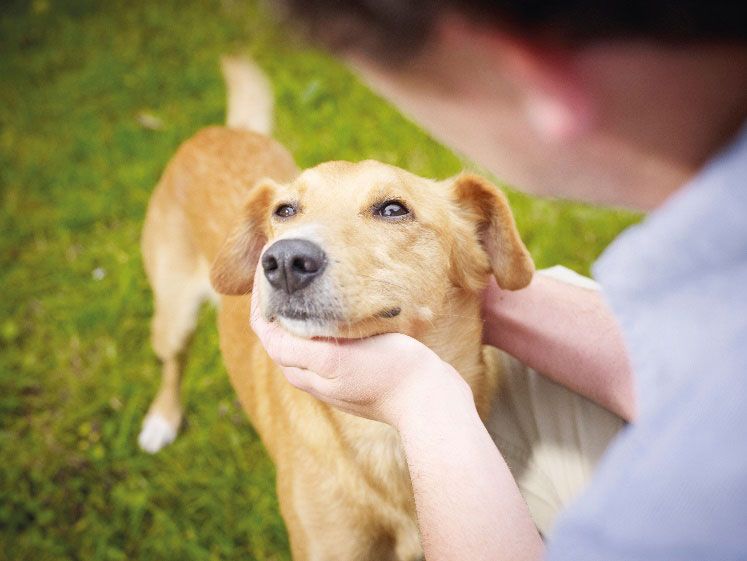Seven tips for the leaves of three
Dogs can get rashes from poison ivy, but it’s more likely you’ll get a poison-ivy rash from your dog.
That’s because dogs’ coats typically protect their skin from the inflammatory effects of urushiol, the poison ivy oil that triggers misery in many people. Their coats, however, can transport and transfer the oil to your hands, legs, face and into your home.

The three-leafed plant is everywhere, and dogs love to romp and roll in the summer woods, so what’s a pet parent to do? Here are some things to keep in mind about dogs, poison ivy and you.
- Rashes are rare. Dogs can contract rashes from poison ivy, but rarely and generally only in areas of their bodies that are thinly covered by fur or completely exposed. This includes the belly, snout and groin. Sensitivity to poison ivy varies from dog to dog, like people, but some breeds are more prone to contracting a rash. They include smaller dogs and those with less fur coverage.
- Protect yourself. One way to prevent your own exposure to poison ivy by way of your dog is to walk him in areas you know are clear of poison ivy. If he often roams on his own, put on some latex gloves and give him a good wash and rinse before allowing him back inside. Another option is to carefully remove poison ivy from areas frequented by your dog and dispose of it safely. PetSafe® brand In-Ground™ fence systems and Wireless fences are good containment options to keep your pup a safe distance away from poison-ivy hotspots. PetSafe® training collars can also help with recall if your dog if he ventures out of your sight in search of the woods.
- Symptoms. Signs your dog has a rash from poison ivy are similar to human symptoms: Redness, blisters and itching. Your dog will respond by chewing, biting and scratching the affected area.
- Is it poison ivy? There is a good chance your dog is responding to a skin condition unrelated to poison ivy, such as chronically dry skin, a fungal infection or flea bites. But if there’s a lot of poison ivy near your home, you and your dog have had a long jaunt in the woods recently, or the symptoms definitely indicate exposure, there are some simple steps you can take to make your pup feel better.
- Don’t act rashly. So what do you do if your dog is reacting to poison ivy? The first thing you need to do is bathe your buddy. Make sure you wear gloves to avoid exposure to the urushiol, use a gentle shampoo and wash all towels after his bath. Contact your vet for advice on giving your dog antihistamines, but most dogs can safely take several doses a day. Aloe or calamine has a soothing effect and can reduce inflammation. Consider gently icing the affected area and set your pal up in a cool room with a fan for recovery.
- Keep an eye out. Inflammation and itching should go away within a few days, but monitor your pup to ensure the allergic reaction doesn’t worsen or lead to infection. If it does, get him to the vet.
- Internal affairs. In rare cases, dogs may eat poison ivy and suffer a bad internal reaction. If you suspect he has eaten poison ivy and shows signs of stomach distress, such as nausea, vomiting or diarrhea, give him some bland food and wait and see how he responds. If digestive stress continues, take him to the vet.
Like the Fourth of July, trips to the beach or lazy afternoons by the pool, poison ivy is just a fact of life during an American summer. With a little preemptive caution and measured response, the leaves of three will leave you be.


